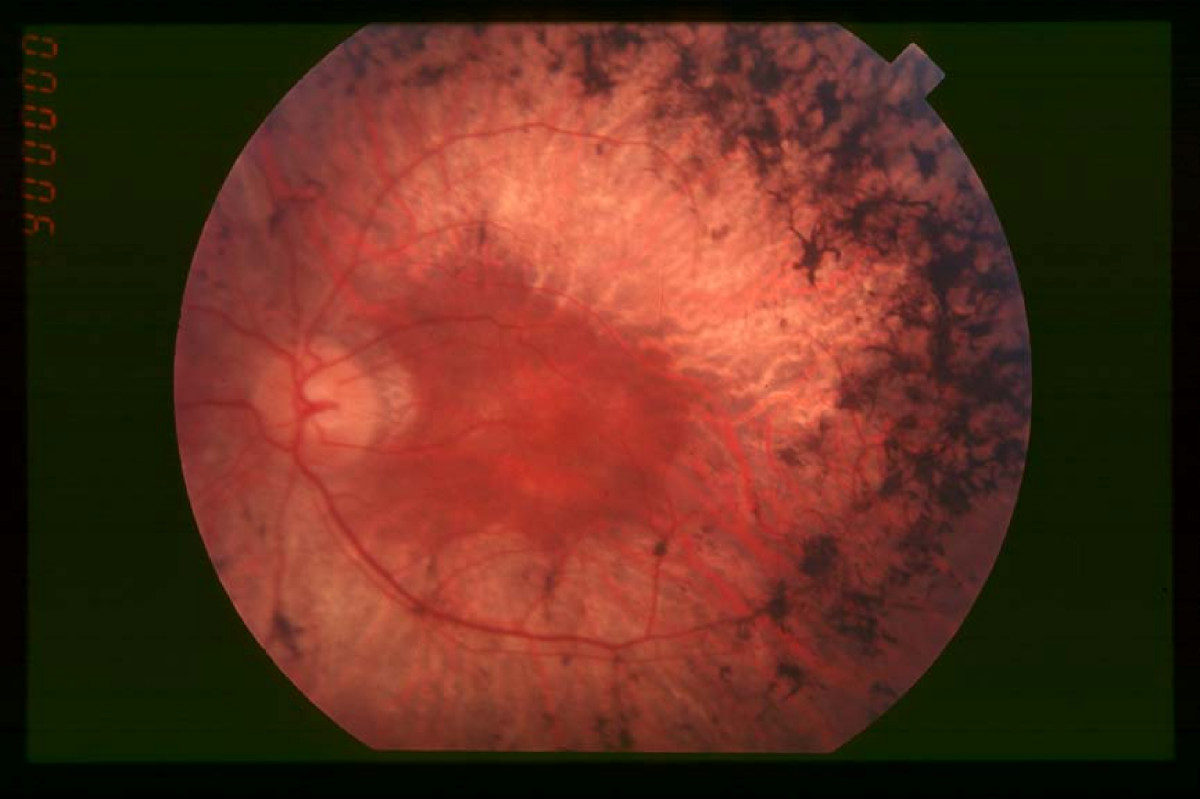Síndrome de Kabuki
2.5. Retinitis pigmentosa
Definition
Retinitis pigmentosa (or pigmentary retinopathy) is not a disease but rather a symptom that can result from various genetic abnormalities. It is characterized by a loss of photoreceptors (especially rods) with pigment deposits in the peripheral retina.
Since rods (more than cones) are primarily affected and are responsible for night vision, difficulty seeing well in low light is often the first symptom. Additionally, because the degeneration begins in the peripheral retina, initially only peripheral vision is compromised.
Information regarding the likelihood of developing retinitis pigmentosa in children with Kabuki syndrome is low. Although it may occasionally appear in the early years of life, it is more common for the retina to appear paler than usual at first, with clear retinitis pigmentosa typically becoming noticeable from puberty onward.

Symptoms
The first clinical manifestation of retinitis pigmentosa is difficulty seeing at night or in low light. Soon, there is a progressive loss of peripheral vision, leading to tunnel vision. This means that the patient can only see things happening right in front of them and not what is occurring to the sides. It’s comparable to looking through a very narrow tube. Initially, patients and their caregivers may not be aware of this issue, as it does not have an immediate functional impact. Eventually, the condition can lead to decreased vision or even blindness, but not all patients progress to this stage.

Treatment
To date, there is no known treatment, except for specific types of retinitis pigmentosa for which gene therapy is being tested.